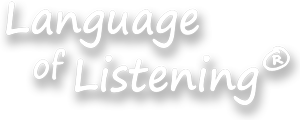Age 2 is challenging for most of us, thus the unfortunate phrase, “terrible two’s.” It tells us a lot about how we feel about boundaries, crying and expressions of anger. Once you understand your feelings, it gets easier to accept your child’s. See if this helps put crying bouts into perspective.
As you know, children will not always like your boundaries. But if a boundary feels right to you, is stated clearly and firmly with a CAN DO or with wishes granted in fantasy, you can avoid most of the battles. For example:
SWYS: “You are pulling the kitty’s tail, and it doesn’t like that.”
Boundary: “Real kitties’ tails are not for pulling.
CAN DO: “You can pull your toy kitty’s tail (or your shirt, or a towel, or whatever is handy).”
–OR–
WISHES: “You wish kitties liked that. You wish they would see you coming, run up to you and say, ‘Meow! Oh boy! My favorite friend is here!’ then purr and purr…”
Wishes work even better when you play along and add exaggerated noises. In this case purring and pretending to be a kitty might be all it takes for the child to shift into play.
For the few other times where for some reason CAN DOs or wishes don’t help, and the child insists it has to be a real kitty’s tail, you can enforce the boundary by freeing the cat, blocking the next grab, etc. and SAY WHAT YOU SEE the child feeling with matching intensity and emphasis without changing the boundary to try to “fix” the tears or anger, as in:
SWYS: “You really wanted that kitty. Nothing else will do, and now the kitty’s gone. You’re sad (disappointed, angry at me, etc.) You don’t like that at all! You wanted the kitty to stay… “
If you hold firm on your boundary and allow the child to experience his or her feelings fully, you will see an interesting thing. Not only do kids adapt to boundaries very quickly like “walls,” but you can actually see that their crying serves an important purpose—crying helps them adapt. Crying is what kids do naturally to help them accept things they don’t like—things like your boundaries.
All of us would be more comfortable with crying if when we were little we hadn’t been repeatedly told that crying was manipulative, as in, “You’re just trying to get what you want,” or hadn’t had adults try to stop or fix us all the time as in, “Stop crying or I’ll give you something to cry about,” or “Here; have it then; just stop crying,” or “Don’t cry; this will make you feel better.”
There’s a great story my mentor, Dr. Garry Landreth, tells that goes something like this:
A little girl stopped at a friend’s house while walking home from school. When the child reached the parent who was watching from the end of the block, the parent asked why she stopped. She said her friend’s doll was broken. The parent said, “Oh, so you stopped to help her fix it,” and the child said, “No, I stopped to help her cry.”
When after a crying bout or a tantrum you see your child looking relaxed and happy, remember to SAY WHAT YOU SEE and point out the STRENGTH:
SWYS: “You got all those tears (or angry feelings) out and now you feel better.”
STRENGTH: “You calmed yourself.”
Pointing out STRENGTHs helps kids (and us) understand the true point of emotional outbursts and helps kids see they have a natural ability to take care of themselves. It leaves kids feeling good about who they are, as in, “I’ve got a built-in way to handle anything, plus I can calm myself. I’m resilient! How great is that?!!”
Look for this as your child grows, and you will have a much easier time setting boundaries and saying how he or she feels instead of trying to change, stop or fix it. Two’s are a whole different experience when you parent from this perspective—maybe even terrific?











